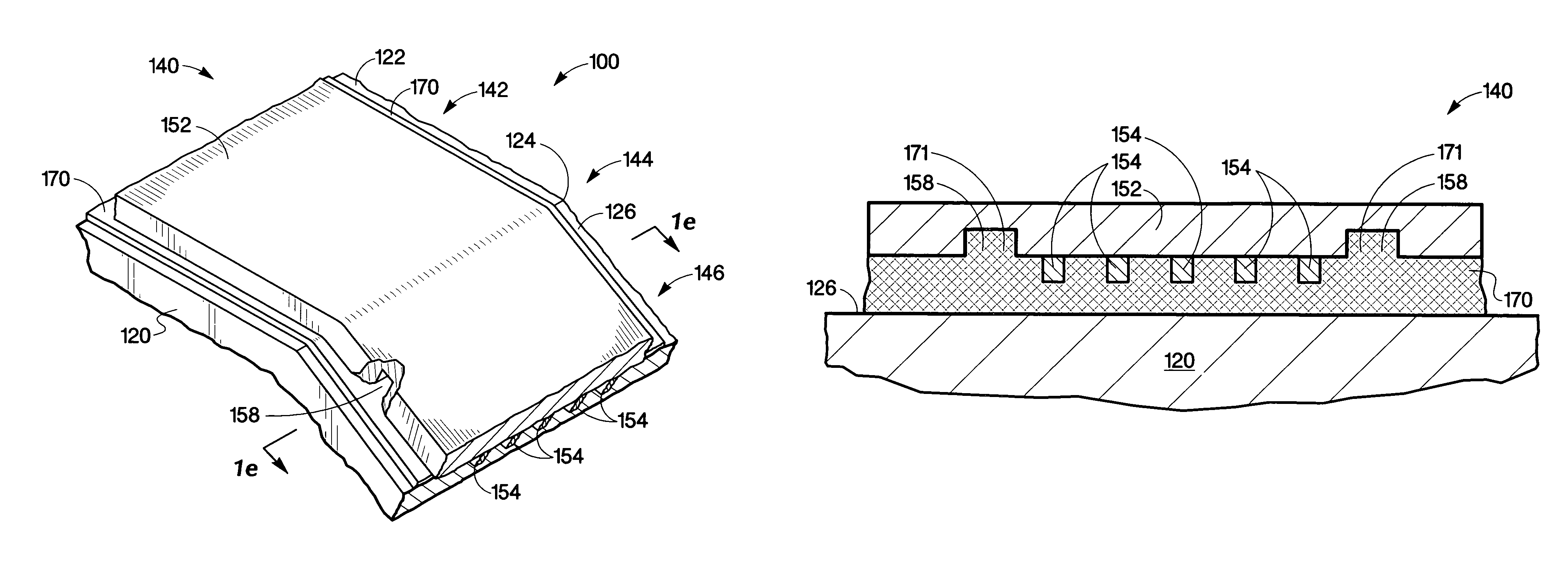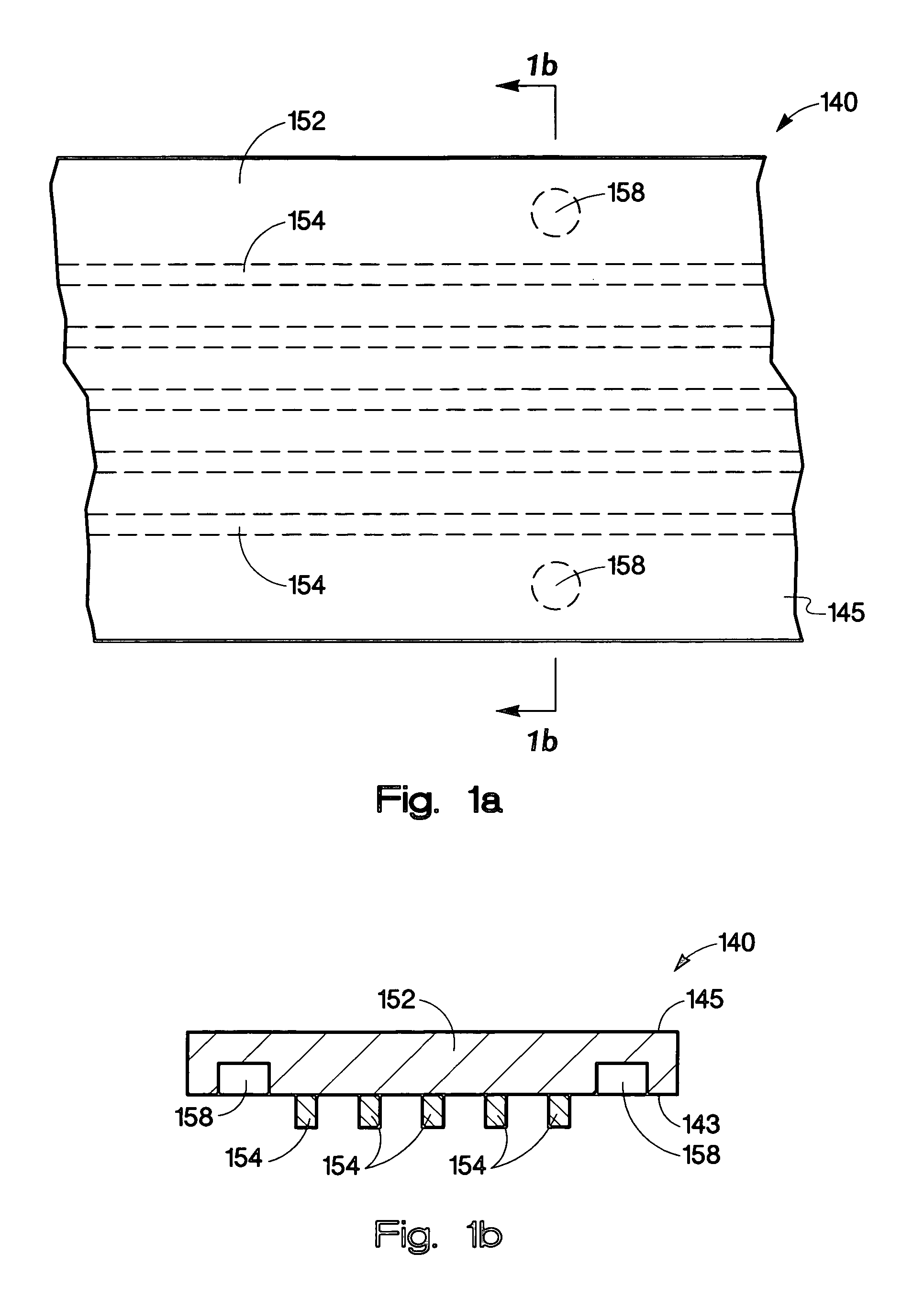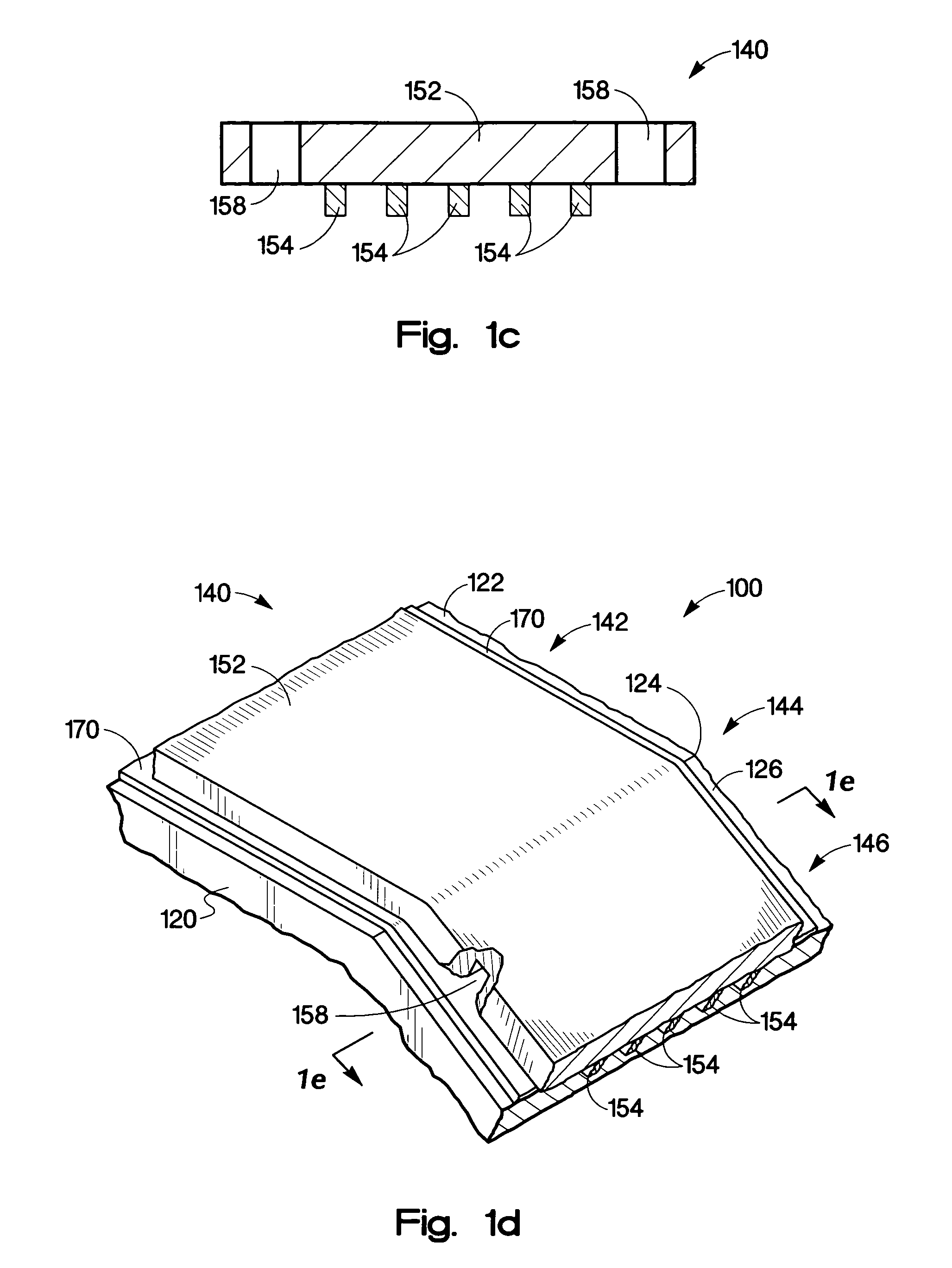Method of using a flexible circuit
a flexible circuit and flexible technology, applied in the direction of printed circuits, printed circuits, printing, etc., can solve the problems of increasing the difficulty of reliably securing flexible circuits around tight bends, and applications that are currently either impractical or not cost-effectiv
- Summary
- Abstract
- Description
- Claims
- Application Information
AI Technical Summary
Benefits of technology
Problems solved by technology
Method used
Image
Examples
Embodiment Construction
[0026]This invention is directed to utilizing anchor structures created in a flexible circuit to provide a strong adhesive bond in a region of the flexible circuit that is tightly and statically bent or wrapped over an edge of a die carrier. In addition to the adhesive strength of the bond formed between the adhesive and the flexible circuit material, the cleat-like structure provides additional adhesive strength, in the region of the tight static bend, it is believed but not limited by the cohesive strength of the adhesive utilized to form the cleat like structure. A wide variety of anchor structures may be utilized in the present invention such as recessed structures and even through holes through which an adhesive may flow to create a cleat-like structure. The present invention may utilize a wide variety of flexible circuits including both the more conventional flexible circuit structures utilizing an adhesive to bond a metal conductor to a dielectric substrate material and to th...
PUM
 Login to View More
Login to View More Abstract
Description
Claims
Application Information
 Login to View More
Login to View More - R&D
- Intellectual Property
- Life Sciences
- Materials
- Tech Scout
- Unparalleled Data Quality
- Higher Quality Content
- 60% Fewer Hallucinations
Browse by: Latest US Patents, China's latest patents, Technical Efficacy Thesaurus, Application Domain, Technology Topic, Popular Technical Reports.
© 2025 PatSnap. All rights reserved.Legal|Privacy policy|Modern Slavery Act Transparency Statement|Sitemap|About US| Contact US: help@patsnap.com



